SAM DALLING: The former White Ferns captain is now back in the ranks, making hundreds and looking ahead to next year's World Cup. She opens up on her journey through the game, the joys of motherhood and the growth of the women's game
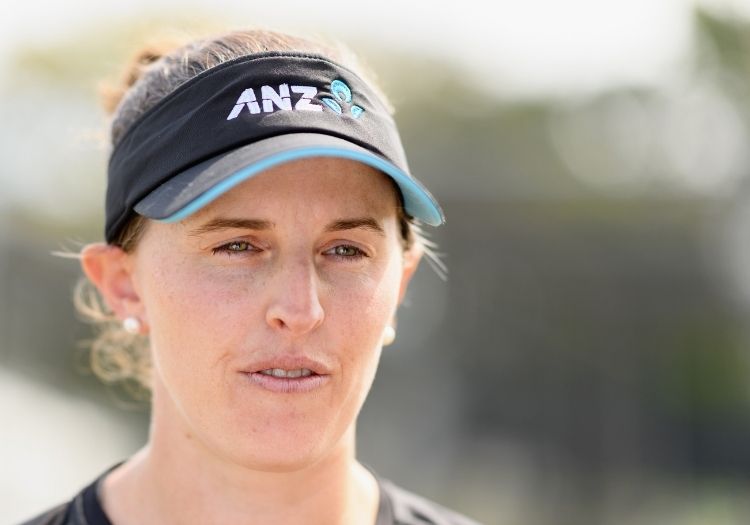
“If you look at the performances of late, we can’t deny that an extra 12 months gives us the opportunity to be better, to improve and to put in better performances on the park” says Amy Satterthwaite. “I am sure everyone else is saying the same thing though.”
She is speaking frankly, in that ‘tell it like it is’ way largely reserved for those with nearly a decade and a half’s experience of international cricket. But then, there is softness too.
“We’ve got some extremely talented cricketers in our side and on paper a team that could challenge and push the best sides. But we’ve also been shown of late that we have to play a lot better cricket and improve our skills to be able to do that. We are under no illusions – we are going to have to work extremely hard but I don’t think it is beyond the realm of possibility either.”
The ‘it’ in question is a world title tilt. In less than a year, New Zealand will host the twelfth edition of the Women’s World Cup, but the White Ferns’ recent form is far from that of champions-elect. Victory in a dead rubber against England in late February ended an eleven-game losing streak, and they have just three wins in their last 18 games stretching back to July 2018.
Their next test is stern; six games against Australia, split evening between T20Is and ODIs. The T20Is start on Sunday, and then comes the Rose Bowl – the trophy for which the sides compete in 50-over cricket. Australia have held the trophy since 2000, winning 15 of the previous 16 series – the latest being a whitewash in Brisbane last October.
Satterthwaite is relishing the challenge: “We have to be honest; we lost to them 5-1 across the two formats over there recently and we've just had the same result against England. But coming up against the best teams in the world is outstanding preparation for next year’s World Cup at home – we couldn’t ask for better. Seeing where we are in comparison to the best of the world is always a good thing.
“We’ve got the players within our side so that if we all perform together, we can still be a force to be reckoned with on our day. I know the Aussies won't take us lightly. I think we've got the players here to be able to really push them, but I know that we're going to have to play extremely well to do so.”
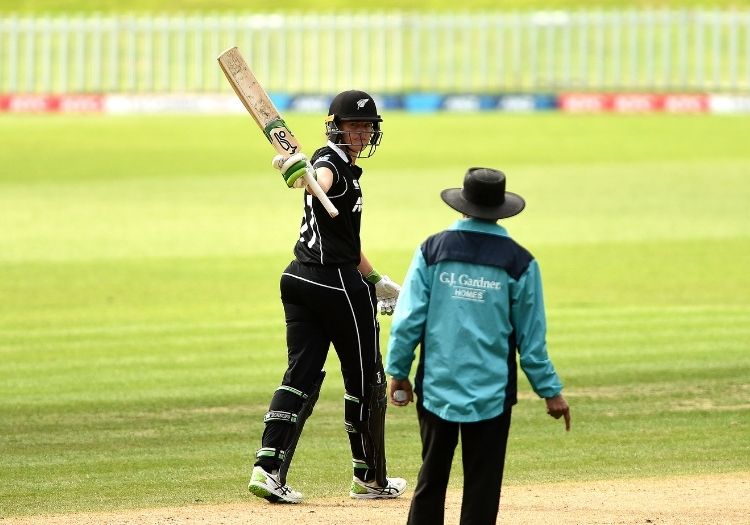
Amy Satterthwaite returned to international form with a fine hundred against England
Australia may not be 50-over world champions – England hold that mantle – but they enjoy strength in depth currently unrivalled.
Ellyse Perry, Meg Lanning, Beth Mooney, Rachael Haynes and Alyssa Healy are all household batting names, while Elyse Villlani, who topped the run scoring charts in the WNCL 2021 (593 runs at 98.83), finishing 174 runs clear of Katie Mack in second, could not get on the tour. “Every other country would be chomping at the bit to put Elyse in their side,” proclaims Satterthwaite.
Left-arm spinner Jess Jonassen sits atop the ICC’s ODI bowling rankings, with Megan Schutt two spots behind her. Ashleigh Gardner is also in the top 20, while Perry herself is in sixth. Molly Strano took most WNCL wickets this season but only made the trip as a replacement for Annabel Sutherland, while a pair of uncapped teenagers; Hannah Darlington and Darcie Brown were picked after promising Women’s Big Bash campaigns.
Undoubtedly Australia’s commitment to enhancing to the women’s domestic game, which started with the introduction of the WBBL in 2016 and was further enhanced by a huge cash injection in 2017, is bearing fruit. “I think there's a real balancing act in terms of investment,” Satterthwaite explains.
Meg Lanning: "The importance being placed on the women's game is great"
“Australia have heavily invested in both the top players and also in the domestic players so you're seeing their development now. Then you’ve got England who have invested in their real top tier and slowly now are starting to invest domestically. Every country has probably done it slightly differently and had different rewards from that.
“I’ve been involved in the WBBL from the start and I've certainly seen the way that the depth and the younger players has grown; the way that they've come on with their skill sets and abilities. It leaves them in a really strong position. That shows where they have got to as a country and the benefit of the investment that they've put in over the last few years. I think every country is aspiring to get to that sort of position.”
Aspirations though are not tangible, and a new Women’s Master Agreement has been in place since late 2019 which increased the number of central contracts (15 to 17), coupled with the introduction of 54 new domestic competition contracts – nine per region.
Parity of pay with their male counterparts remains a long way off and that issue needs addressing but as Satterthwaite – speaking to The Cricketer just days after sealing a domestic double with Canterbury Magicians in the Hallyburton Johnstone 50-over Shield and Super Smash T20 – points out, it is about progress rather than perfection.
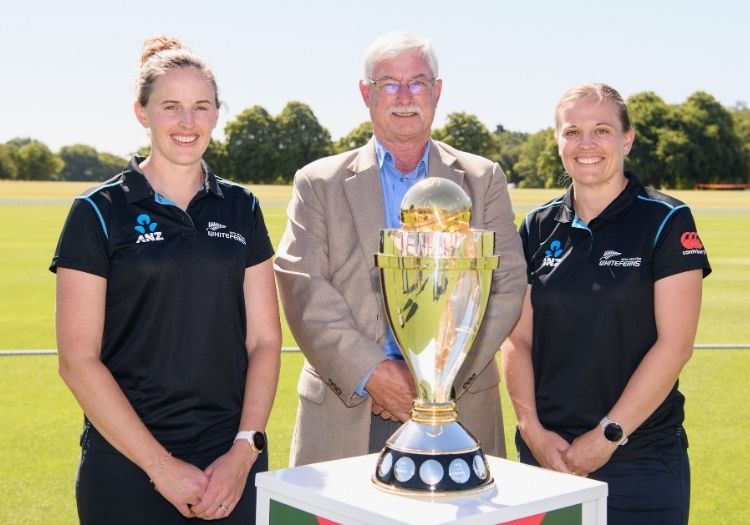
Satterthwaite, alongside wife Lea Tahuhu and New Zealand great Sir Richard Hadlee
“We are seeing improvements in our domestic structure and that’s all we can ask for. You’d always love to do things as fast you can but there's always a reality of slight limitations as you go along. As long as we are moving in the right direction and we are making those improvements, that’s got to be a real positive.”
And she cites the introduction of a pair of promising international debutantes during the recent England series as an example. “The likes of Fran Jonas and Brooke Halliday have had some exposure to international cricket, and have come in and looked really comfortable. They look like they can perform at that level. That is fantastic to see from our point of view and they’ve grown the depth that we’ve got.
“But not only that, hopefully they can go back to their domestic teams and take back the learnings and experience that they’ve had and pass that on. The more we're able to do that, the more and more players we can get up to the level you need to be at to compete at international level. We will be in a better place for it.”
The rapid advancements of the women’s game would have been unimaginable when Satterthwaite’s career began. From strong cricketing stock, father Michael represented North Canterbury in the 1980s, before serving on Canterbury Cricket’s board for 15 years. “From as soon as I could walk, I was following dad around everywhere with a bat and ball and begging for throws,” she recalls.
Tammy Beaumont and Danni Wyatt: Two peas in a pod
“I fell in love with the game from an early age and was fortunate enough that where I lived out in the country, there was a boys team that I was able to be a part of. Then when I moved into town, I was able to play with the girls’ team.”
At that point her role models were largely male, with Stephen Fleming, Chris Harris, Chris Cairns, Nathan Astle and Craig McMillan all starring for both New Zealand and Canterbury. A World Cup win changed all that, the White Ferns defeating Australia on home soil to lift the trophy in 2000 just days before Christmas.
“That certainly put women's cricket in the spotlight in New Zealand. The games were on TV and you started to hear about these names of the star players. I do think we've come a long way in terms of exposure that the women’s game is getting. Hopefully, there are a lot more young females that are growing up and having female cricketers that they can see on TV and then aspire to be like.”
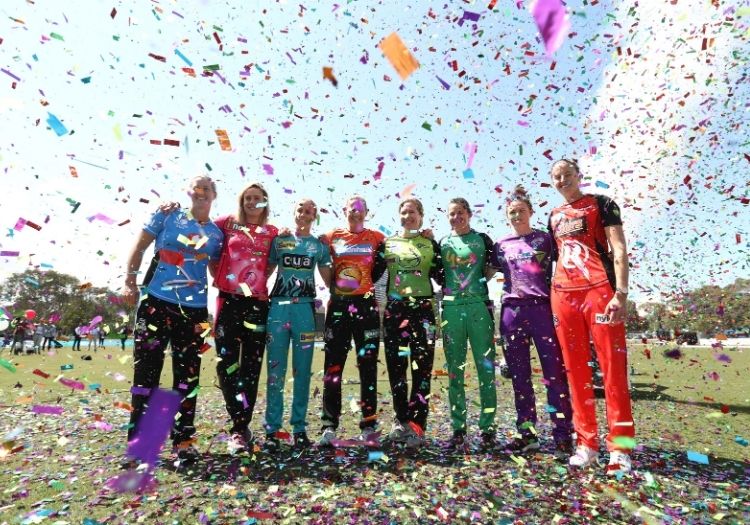
Satterthwaite (right) captains Melbourne Renegades in the Women's Big Bash
Her Canterbury debut came in 2003 and, following a couple of games for the ‘A’ team in 2006, Satterthwaite made her international debut in 2007. She announced her arrival by ripping through England with 6 for 17 in only her third match. It remains a world T20I record among ICC full members.
“I was quite unknown in terms of my bowling back that – it was a bit of a fluke really,” she says. “It is written in the history books, as they say! I look back fondly but to think about where I've come as a player since then it's been a long, special journey although it does make you feel older!”
More recently she has turned to off-spin. “It is probably just showing my age again! I had had enough of running in too far,” she adds of the switch. “Back then we didn’t really have any spinners coming through for Canterbury or for the White Ferns. It was a little bit of mucking around. It wasn’t overly intentional – it kind of just happened naturally. Whether it is the right or wrong decision who knows!”
Since her debut Satterthwaite has rarely skipped a White Ferns beat. She featured in the World Cup final defeat to England in 2009, and at last count had 230 international appearances to her name. Centrally contracted from 2015, she agonised over a part-time contract in 2013 before turning it down and continues to work as a veterinary practice manager. “I remember sweating over it quite a lot,” she recalls, laughing.
VISIT THE WOMEN'S CRICKET HUB
“I stewed on it for a long time – it was a really challenging one. The opportunity to have a contract as a cricketer is something that I didn't think would ever happen in my career. So, to be considering turning it down seemed a bit ludicrous in a way.
“But I was in a job at the time that was financially able to support me a little bit more and also balance that with training and playing cricket. I had a really supportive boss who just allowed it to happen. I feel really fortunate in the way the contracts went in the end, which allowed be to get into the system. I am thankful for the way it turned out.”
Her latest knock was an unbeaten 119 against England in February, during which she nudged Debbie Hockley out of second spot in New Zealand’s ODI run-scoring charts. It was Satterthwaite’s seventh hundred in the format, four of those coming successively back in 2017, which means she holds the record for consecutive ODI tons with Kumar Sangakkara. It was also her first for several years.
“The most pleasing thing was just to be there at the end and produce a winning performance whether it was a 100 or not,” she says. “That is what I have been wanting to do: in Australia I got sixty odd, but that is not quite enough. You want to be getting 80 or 100 – putting those big scores on the board means you are winning games. How I went about my innings, the tempo of it and how I was playing, I felt like I was back to how I was playing pre-baby.”
Oh yes, the little one. Baby Grace, the one-year-old born at the start of 2020 to Satterthwaite and teammate Lea Tahuhu. The one who has stolen the hearts of cricket teams throughout both New Zealand and Australia.
“It has been amazing. A completely different lifestyle but I’ve absolutely loved it. You have to find ways of having balance in life – if you are 100 per cent cricket it can be quite overwhelming – and having a child certainly gives you a different perspective. It really helps you get away!”

Satterthwaite in action for Canterbury Magicians
The three of them spent a chunk of the winter in Australia, first on international duty and then in the WBBL hub. The initial plan was for family to join and provide day-care but the pandemic intervened; the pair needn’t have worried.
“Everyone was pretty excited about Grace being there. She certainly had a lot of aunties and people offering to look after her so that gave us a little bit of downtime! They all embraced having her around. Not just within our team environment but the whole hub. We would go down to breakfast and people would come over. You know it’s not about you anymore – it’s all about her!
“It’s been a unique and different experience but thankfully so far it's worked extremely well. We’ve been to Australia for three months at a time of so much uncertainty around the world, and without having family there to help and support. We’ve had to employ strangers to help look after our child!”
Even so, juggling family life and professional sport – whether for the White Ferns or for Melbourne Renegades, who Satterthwaite skippered – sounds tricky. “It could be quite stressful if you let it. That’s where Lea has been amazing. Certainly, probably going into the summer I was slightly anxious about how it was all going to work. She just kept reassuring me that it will work, and it will happen.
716 days later: The last time England went a year without an ODI
“She is really levelling and approaches things bit by bit. We deal with what is in front of us. You don't get too worked up about too much. You just cross off everything that needs to be done, and everything that you can control. Then you have to trust that it will work out.”
And that trust included Satterthwaite believing she could return to the top level, again with the support of Tahuhu. “I always wanted to be back so the question for me was whether I thought I could get back. Part of it was the language I used around it: 'What if I don’t?'
“Your body changes when you’ve had a child and you’ve got to get back to fitness, as well as being in a body that has changed a little bit. Lea changed that – she said you will get back and encouraged me. She kept that belief in me that it would be possible. It has had its challenges, but it has been an amazing journey.”
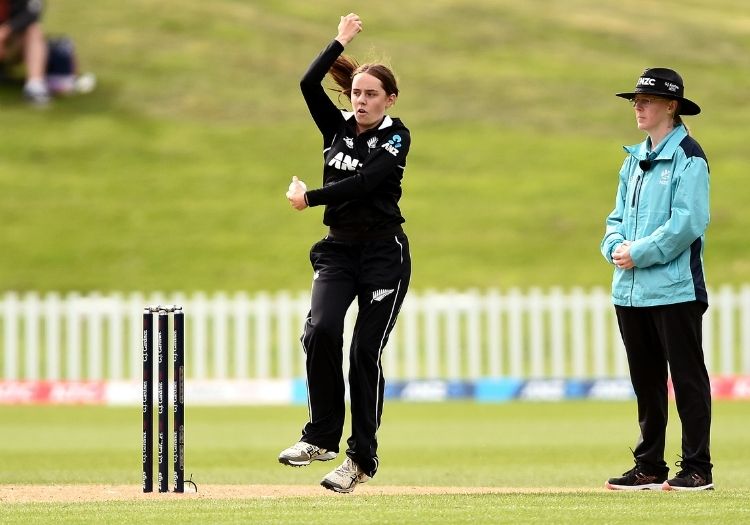
Fran Jonas made her international debut against England - one of a new generation starting to emerge
Tahuhu – one of the quickest bowlers on the women’s circuit – has 123 international wickets and the duo have shared a dressing room for more than a decade for both club and country. Mixing home and professional life has the potential to cause tension: “We have been pretty lucky with how it's worked for us,” she explains.
“We often talk about using the car ride home to debrief or discuss anything around cricket. One of the pros is we can understand what each other is going through. Then when we get home, we try to leave it at the door a little bit. It is not a perfect system, but we try to make sure cricket doesn’t consume us. I think you always end up in a better place when you are able to do that.
There are not too many times when we have been sick of each other in the changing room, although it probably helps that I am a batter and Lea is a bowler. They are different facets of the game and you can go to training and just about not see each other or talk to each other all day!”
There is far more to Alex Hartley than a Twitter storm
Relationships are important to Satterthwaite. “Whatever job you are in – whether it is sport or otherwise – the people make it,” she says. And cricket has brought her some of her greatest friendships; the holy trinity she forms with Sophie Devine and Suzie Bates being the shining example. No one has more women’s ODI runs than Bates, while Devine – the youngest of the trio by a couple of years – sits sixth in the list despite spending the early part of her career batting way down the order.
“They are both amazing cricketers in their own right and to be able to have all of us in one team has been incredible. It has been a special journey and we have learned a lot off each other – it has been great to see how they go about their business. We have a few more grey hairs than when we started but it has been a lot of fun.
“I think the biggest thing we will take out of it is the friendships – those are for life. Your career is always relatively short in the scheme of things but the friendships and memories that we will now have moving forward once we do one day retired from cricket will last forever.”
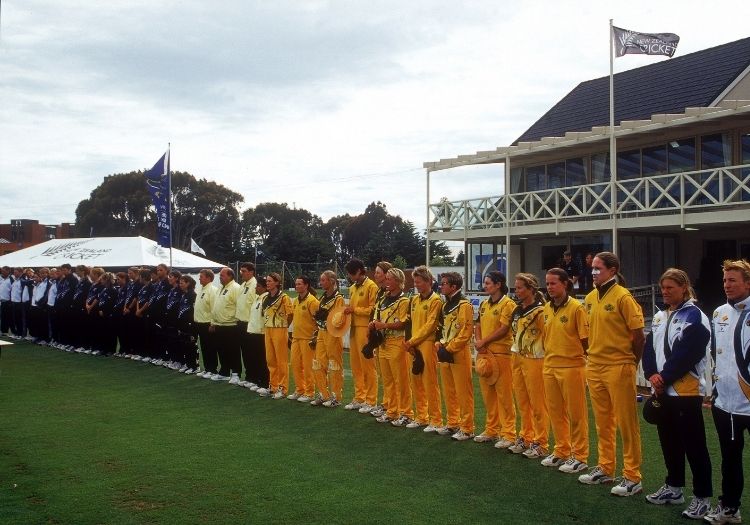
Satterthwaite was inspired by New Zealand's 2000 World Cup win
And that bond means that regardless of who captains the White Ferns – the trio have all led the team at points, Satterthwaite taking over from Bates in September 2018, before handing over the baton to Devine more recently – will have the backing of the others. “Now the decision has been made I am 100 per cent behind it. I've been involved in this team for a long time now and we've had teams at times that we think could have won World Cups and we haven't got over the line.
“At the end of the day it is something that the whole team – especially the likes of Suzie, Sophie and myself – would love to be able to achieve. We are all working extremely hard and are right behind each other. Every one of us is right behind her. Each and every one of us is trying to be the best we can be and achieve a lifelong goal for all of us. Whether you are on the park or off the park working together off behind the scenes, we are always right behind her.”
And on whether Devine will need to rein in her prankster nature. “I think she's will always have little bit of that and that's exactly what you want - you want people to be themselves.
“Yes, you've got the skipper title but you always want to make sure that you're having a laugh and trying to be yourself because then you're going to be in the best place possible to perform. You certainly don't want her to change too much in that sense – as long as she's not playing pranks on you!”
New Zealand have twice hosted women’s world cup, lifting the trophy on both occasions. An omen? Satterthwaite will certainly hope so, and it would take a cold heart to suggest it wouldn’t be deserved.
Subscribe today and receive The Cricketer’s centenary issue – six issues for £19.21. Click here